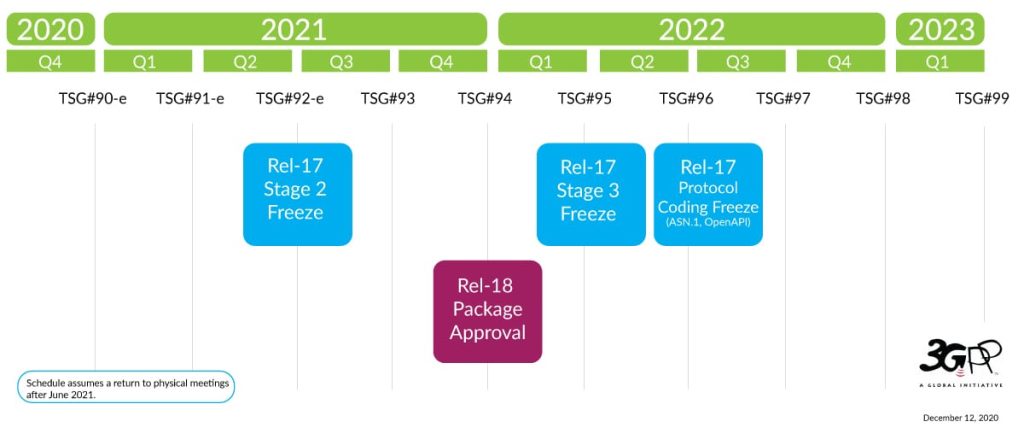The hype around industrial 5G – the only 5G hype worth getting hyped about – has been knocked off course, after the 3GPP standards group said Release 17 of the 5G New Radio (NR) standard will not be completed until 2020, a year behind schedule.
It put the delay, which sets-back the timeline for the crucial ultra-reliable low-latency comms (URLLC) strand of the 5G standard, down to enforced remote-working and “cancellation of all face-to-face meetings”, as a consequence of the coronavirus (Covid-19) pandemic.
The new schedule has completion slated for mid-2022, with a protocol freeze in March 2022 and a protocol-coding freeze in June 2022. The proviso is the technical specification groups can go back to meeting in-person in the second half of 2021. “This guidance takes into account the fact that in the busiest groups the stream of contributions can peak at over 1000 emails a day,” it said in a statement.
It noted only the schedule has changed; the work remains the same. It stated: “With this revised timeline, the broader 5G industry can rely on an informed and well-considered schedule that takes into account the peculiar situation created by life during a pandemic.”
3GPP noted the relevance of Release 17, and of its URLLC content, to the industrial IoT sector.
It stated: “Release 17 features… include new work and enhancements for URLLC for industrial IoT over NR, NR support over non-terrestrial networks, MIMO, integrated access and backhaul (IAB), metropolitan beacon system (MBS) positioning, NR multicast and broadcast services, RAN slicing for NR, NR sidelink, multi radio-access technology (RAT) dual-connectivity, support for multi-SIM devices for LTE/NR, NR small data transmissions in inactive state and multimedia priority service, to name a few.”


